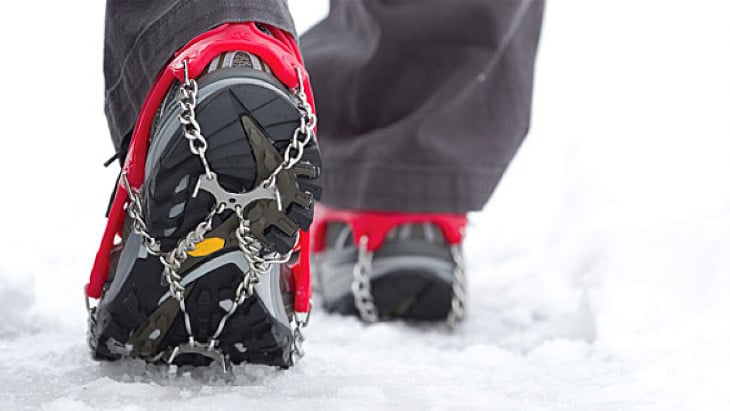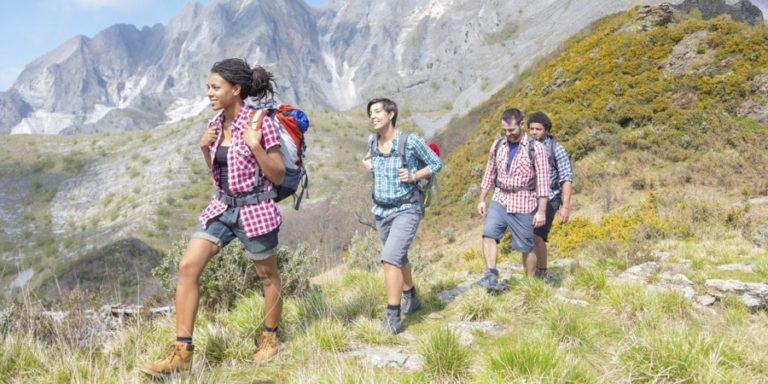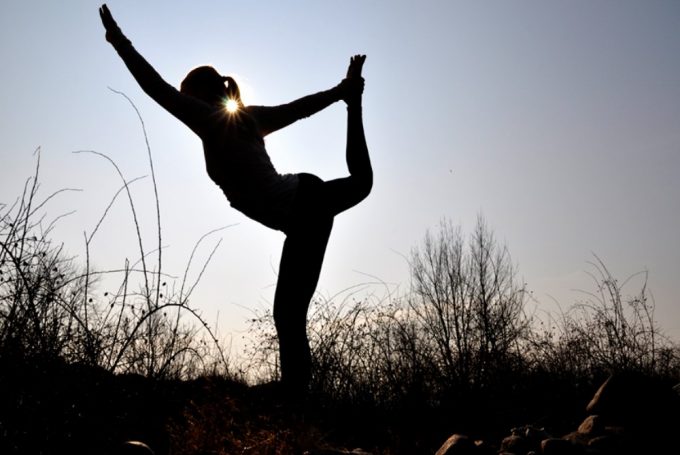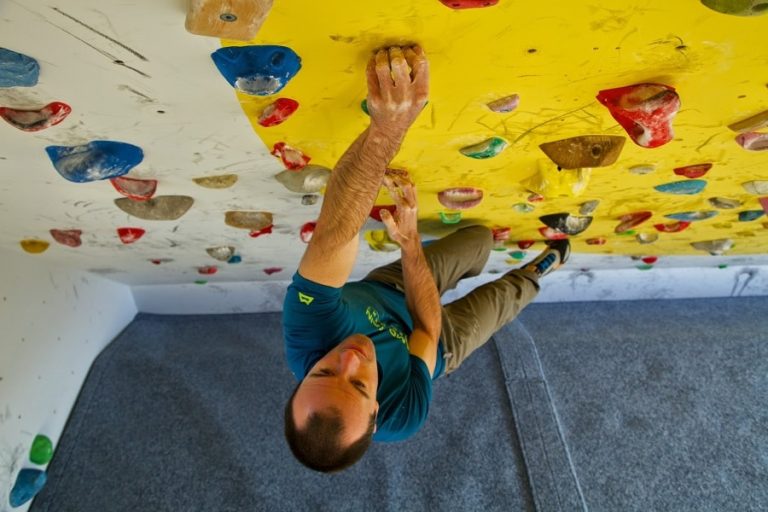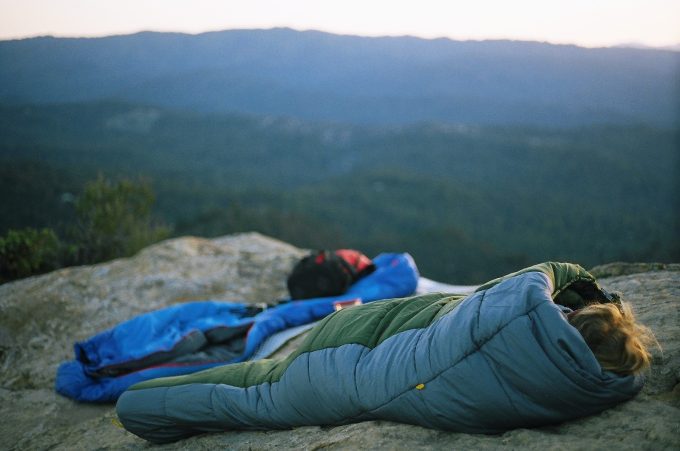How to Use Walking Poles: Resisting Gravity
If you are a fan of hiking, trekking or simply nature walking you probably know that physical fitness is pretty much a must. To preserve this fitness even at old age, you might have already thought to purchase some hiking poles. Unfortunately, many people still didn’t manage to figure out how to use walking poles in an intended way, that will benefit their health both in the short and the long term.
In this article, we will share some hiking pole tips and detailed explanations that you will need. These tips will help you to better understand why using them is both a good idea for your health and for your temporary stamina when you are out on a trail.
If you plan to take the scenic route you will have the necessary knowledge to properly set up a hiking pole. First, we are going to showcase what are the benefits of using a single pole or even better a pair. Then we will look at what are the criteria to choose a good set and the most important part, we will look into the proper usage techniques.
The Real Benefits of a Good Pole
The idea of using a stick to help ourselves traverse long and rugged landscapes in an easier fashion is not a new phenomenon. Sticks were one of the first tool humans have ever used and walking stick became engraved in our culture.
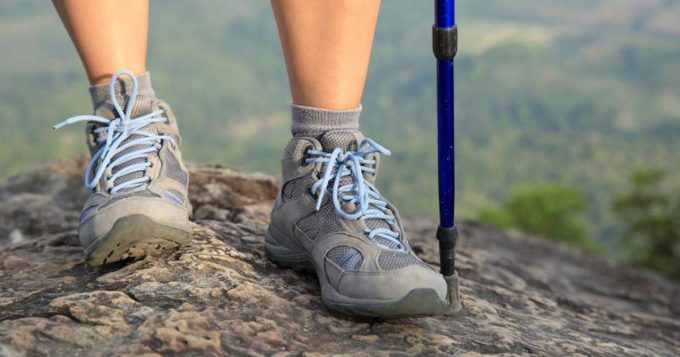
But as everything else, trekking poles have evolved a great deal as well and today they are used by both professional athletes and people who just want to spend some time in nature or simply have an extra workout routine. There are several different pole types out there and dozens of manufacturers who make them with as many benefits in mind as possible.
It quickly becomes obvious, that there is far more to it when it comes down to serious hikes, then simply selecting a long and sturdy stick or a metal rod and going head first into the woods.
As always there are some benefits to it, benefits that can be achieved only by using good techniques. Let’s take a look at some of these benefits that one can expect to get from using a pair.
Extra Miles
This is one of the first benefits that one would think about and one that is also the most obvious. Learning how to use hiking poles will help you get through far larger distances than before. Some people are saying that with a large backpack one could get as much as 50% extra mileage.
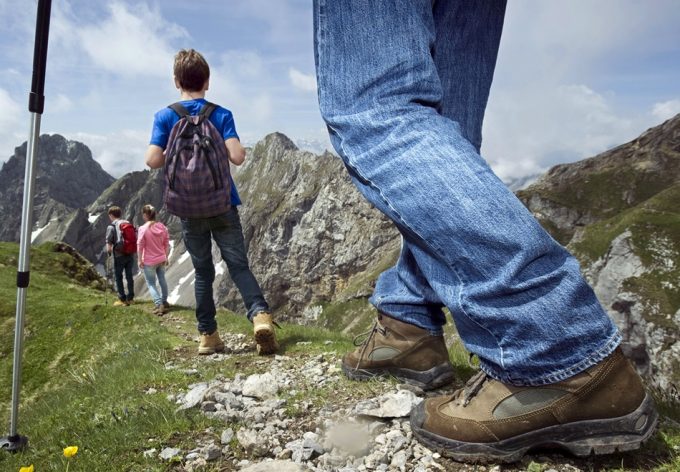
In all honesty, we are more conservative with our estimates, but one thing is certain. If walking poles are used in the correct fashion they can help mitigate some issues that come with the extra weight and help trekkers maintain their stability. Managing that extra two miles per day becomes almost a sure bet.
Obviously, this also has to be balanced out by proper footwear and comfortable clothing to have a serious effect, because any other interfering nuisance might take away from the potential benefits you could get by using a good trekking pole.
Healthy Option
Getting the extra miles is one thing, getting them and not affecting your own health is a totally different experience altogether. The good news is that poles can have a very positive benefit when it comes to overall health and that can be especially visible at older ages.
The poles will help you to get a better posture in the long run, and this is indeed needed when you are carrying extra weight. Because of this, the usual back and neck pains will be far more manageable for almost anyone if not entirely gone on the way of the dodo.
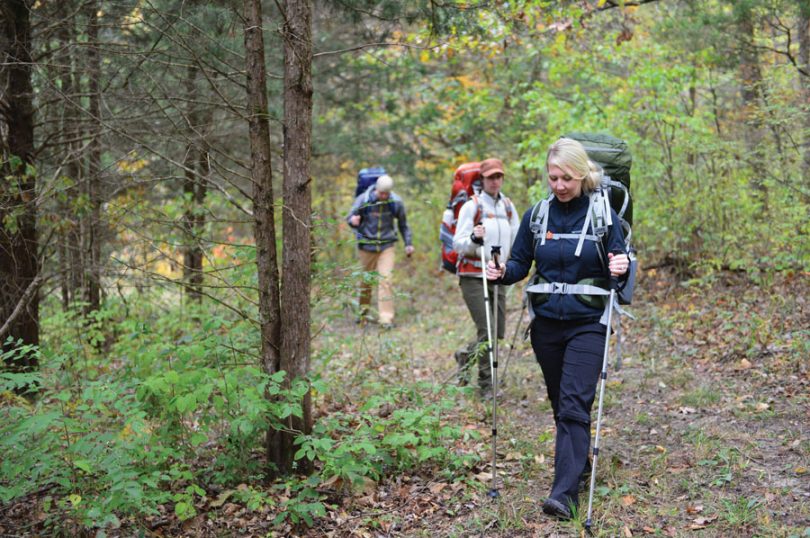
By absorbing some of the physical shock one would usually do only with their legs, the trekking poles help maintain the health of your knees. This is a practice that you must start if you plan to go on nature walks even in the later years of your life.
Alternative Use
If for some reason the two main benefits (covering extra distance and positive effects on one’s health) are not enough, there are always several alternative uses that one can get out of a seemingly generic looking stick.
These are just some tried and tested things that trekking poles could be surprisingly useful for:
- Moving dangerous plants, like poison ivy out of your way
- Quickly setting up a basic survival tent
- Protecting yourself against wildlife
- Marking trails or signaling someone
- Checking out how deep a stream is
- Using it as an extra-sensorial equipment in the dark
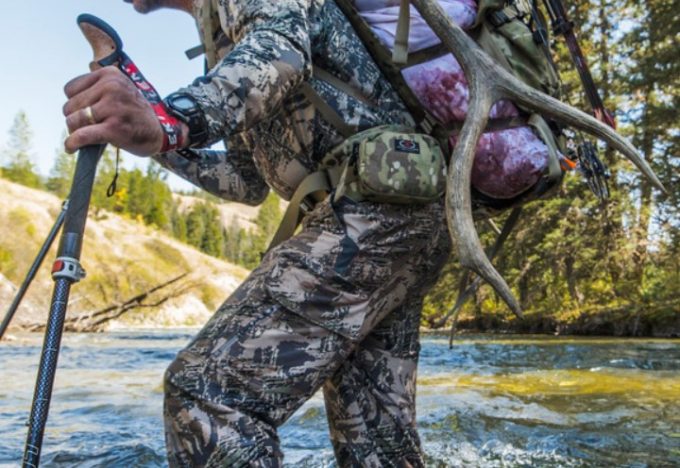
As you can see there are several instances that a trekking pole might be used, in ways that it was not necessarily intended. Even if some might find it as an extra and cumbersome piece of equipment, the truth is that it will more than likely come handy on several occasions.
Picking the Best in Class
It is pretty clear that walking poles come with several benefits, but the problem is that they also come in several models. There is a whole industry behind it, manufacturers who try their best to add even more usability to them. So which one should you choose? The truth is that most of them will be just fine if you follow some basic guidelines.
Be sure that the aluminum that is used during manufacturing is of a high grade (at least something like the 7075 aluminum). Yes, there are other materials out there as well, but we would recommend going for aluminum as they offer usually the best bang for your buck. Make sure that the poles are also of adjustable heights.
This is one of the key aspects that make one not only portable but also highly versatile. The locking mechanism at the separation mark should be as strong as possible. Most of them are made of plastic, but the more expensive ones are often made out of metal or carbon fiber.
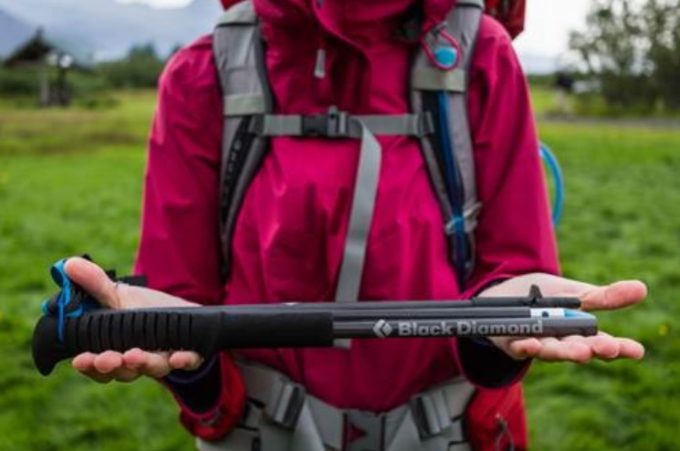
The wrist strap should be comfortable and made out of a material that you know won’t bother your skin, preferably something that is made out of an antiallergenic compound.
Always make sure that the straps are adjustable, otherwise, you will have serious issues with them, and if they are, you should go with flip locks and not twist locks as they are easier to operate. Many models treat them as afterthoughts, in that case, pass on them as they will severely affect the quality of the stick.
You will also have the option to choose a single piece or buy them in pairs. While having a single one might help (and some trekkers do prefer that) we believe that a pair will always give you a higher degree of stability. Also, buying it as a pair usually doesn’t mean doubling the cost.
Ready for Trekking
When you finally managed to get a pair that suits you, you will have to decide where you want to use them for the first time and after going to different locations. If you are done with that you are finally ready to break in your newest addition to your trekking collection.

Adjusting The Wrist Strap
The wrist strap is an essential part of a hiking pole as it will help you to rest your grip from time to time, and it will also keep the stick nearby in case you fall.
Usually, most straps are placed in a way that you have to put your hand through it from the bottom up. This way your grip can be firm and the strap itself won’t irate the skin on your arm. As soon as you grabbed the pole grip tightly, adjust the strap until it’s well placed around your wrist.
Make sure that the strap is not too tight. It can make the taking off process difficult and the overall practice is also of no benefit for your blood circulation. Simply try and find that perfectly balanced tightness that will make using the pole a seamless experience.
Perfect Length
As soon as you are ready with the strap adjustment you can start with the pole length settings. This is a bit trickier as different situations require different pole lengths and changing them might be quite frequent on certain terrains, but we will cover that later.
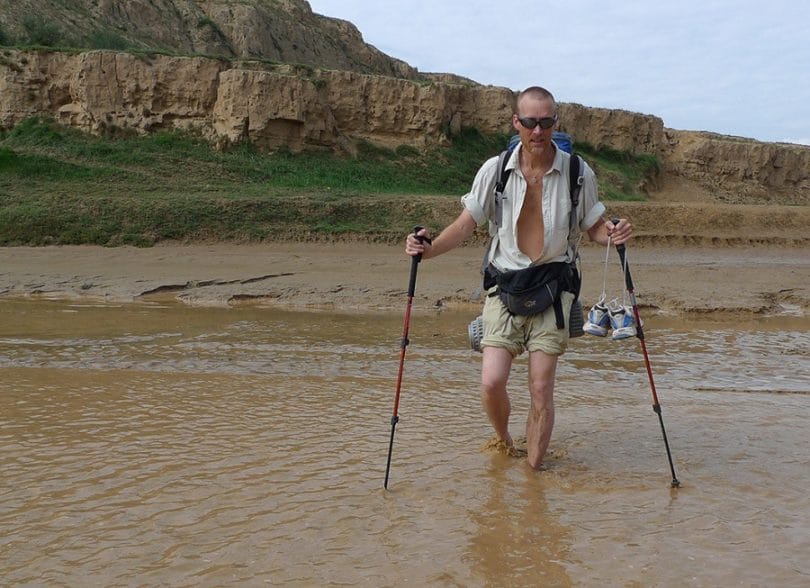
For starters, make sure that the poles are long enough that in a simple standing position your elbows will be at a ninety-degree angle. This is the best pose for your arms as this is the least straining for your muscles but in the same time, you will still be able to keep a fast reaction time, no matter what might occur on the mountain.
Tighten Your Pole
After the length adjustment comes the tightening of the pole segments. As we mentioned before there are several different tightening mechanisms available on the market, but they all have two common issues: they usually represent the weakest part of the equipment and using them might give you a bit of a headache.
If you will force them, they can easily break or even get stuck. The later problem might not make them useless but transporting them will become harder. But if you do not tighten them well enough, they might slip and change length when you might need them the most.
Not tightening them well enough might also make the filaments degrade at a faster rate. Remember that usually there are not many brands that sell spare parts, so if they go while the warranty is gone then you will have to buy a new pair.

As soon as you are done tightening the pole always make a so-called “weight check”. The pole should perfectly support your body weight without the different segments sliding in or out. Just be careful to let your weight on the pole in an even way, so it won’t snap at the middle.
Getting The Hang of It
Now that you are finally done with the setup it’s finally time to start the long march with these beauties. Remember that walking poles are there for us so we can use them as natural extensions of our arms. So try to walk as naturally as you would ordinarily do.
Always keep yourself to the pole-opposite foot technique: if your left foot is the one in front then you should use the pole in your right hand for weight and effort mitigation, putting it next to your foot. If your left foot is in front you will use the right pole and so on.
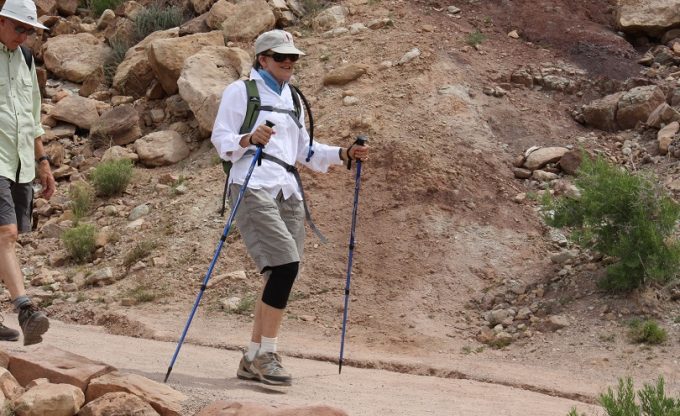
Never put the poles it in front of your foot as you might get tangled in it at one point and fall over. This can be pretty common when it comes to novice hikers who get tired. In this case, the poles become not only useless but downright a dangerous extra weight that you will drag on.
Uphill or Downhill
One of the greatest deciding factors when it comes to pole usage and length adjustment comes from one concrete situation: are you walking up or down a slope?
When you are going up a hill usually the best option is to shorten the poles. This way you will still have a correct posture and you won’t have to overstretch your arms. If they are too long you might have real difficulties using them and it will almost guarantee that you will be tired in a record amount of time.
On the other hand, when going downhill always lengthen your poles. While going up usually you won’t have to shorten it more than ten inches, going down, depending on the slope, you might need even twice that length. This way you won’t bend too much and the risk of falling down, if there is a lot of weight in your backpack will be minimal.

But in many instances, you will find yourself in situations where you will have to use the contouring technique to go up but mostly down on slopes. This is one of the safest ways to get to the bottom of a hill in the shortest amount of time possible.
If you do this, make sure that one of the poles is longer than usual while the other is shorter. Keep the short one in the hand that faces the top of the hill while the long one in the hand that faces the bottom. Plant them when you feel that they are needed and always be careful on how much body weight you put on them. Going down a slope might result in the snapping of the pole.
Tips That Are Rarely Shared
There are some lesser-known tips and tricks that hikers usually find out on their own, but we believe that they are worth mentioning so you can get the hang of using walking poles even faster.
First would be the rate at what you wish to plant the poles when you are walking. Most people believe that at every step you must plant one of the poles. This is not necessarily true. You can plant it at every second or third depending on your walking rhythm or when you feel that it will benefit you. Do not force the one-step-one-pole rule if it is not comfortable for you.
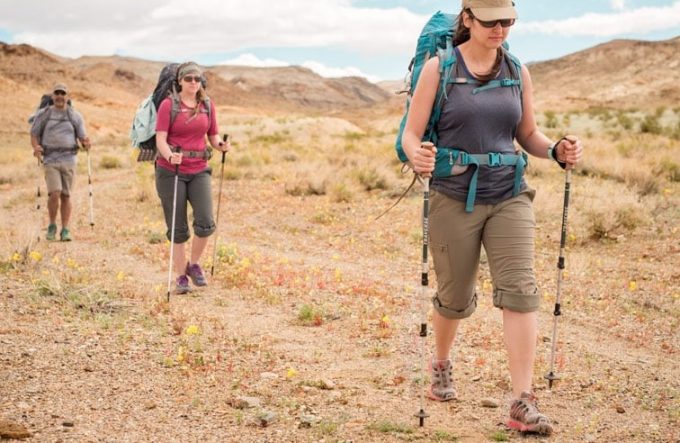
When you are climbing onto a ledge always have both poles planted at the same time. Do not use only one as you might lose your balance when you hold on to it and fall down. A surprisingly large amount of accidents results in this way and they can be quite nasty.
Pay extra attention when you are using the poles on rocky or fragmented land. This might be a pretty uncomfortable experience as you will constantly have to scout for enough room to plant them into a sturdy position.
But this is not the only issue you will face. When getting the pole out it can break easily if it manages to get stuck between two rocks so always be careful on where you plant between rocks.
More Than Just a Pole
And with this, you have gotten all the basic ideas of when and more importantly how to use walking poles in their intended fashion. At first glance this might seem like a trivial information, but the more you will read into it, the clearer it will get that this is by no means a laughing matter.
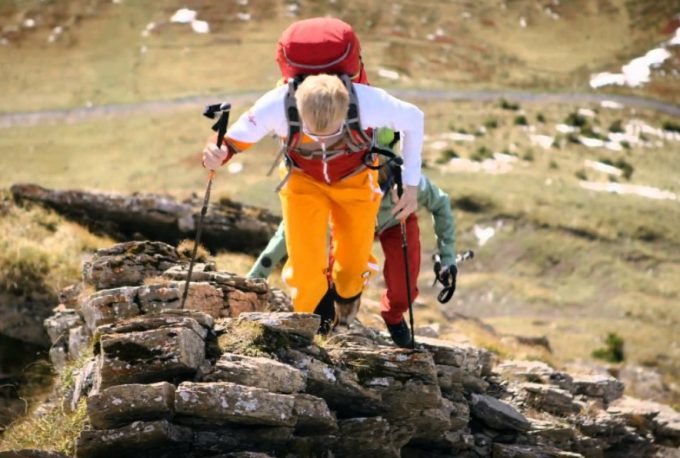
If you plan to take short walks, but move most muscles in your body, or want to get into long hikes that might last you even days and could see your physical elevation change hundreds of meters, you will want a trekking pole and now you will be able to get into its rhythm in a matter of hours.
If you are a hiker with several years of experience, then you might have already known some of the things that we have enlisted in this article. If it is so, please feel free to add any tips and tricks that we might have forgotten, or maybe some that you have found out on your own. We are always ready to learn new things, and this is especially true when it comes to outdoor experiences.

